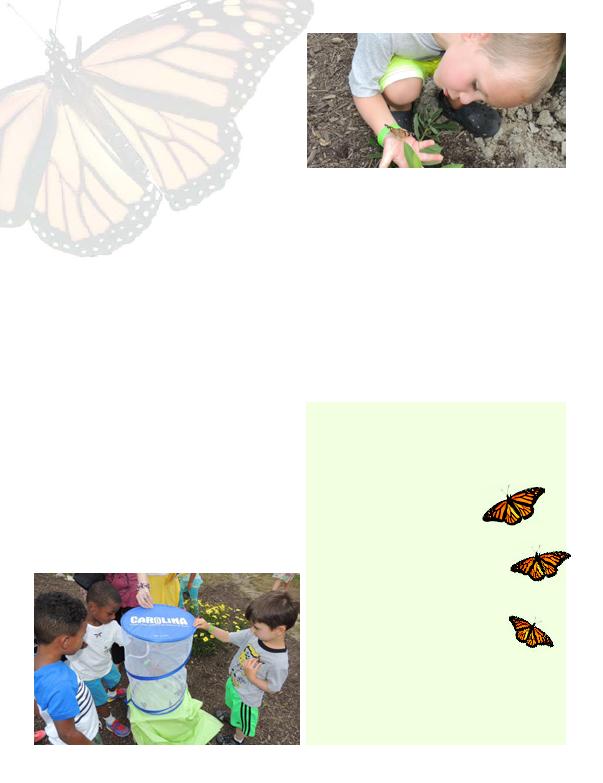
located in Beachwood City Park at the bottom of
the steps by the pavilion, is a collaboration between
Beachwood Historical Society, Boy Scout Troop 620 and
Cuyahoga Arts and Culture, and resulted from a special grant, titled "Celebrate the Park," issued by CAC.
Scout, and his mentor, City of
Beachwood Service Depart-
ment's assistant superintendent/
inspector Chris Vild, the garden
became reality after milkweed
plants were installed to attract
pollinators, which include but-
terflies, hummingbirds and bees.
promote and save monarch
butterflies," Beachwood Histori-
cal Society president Rosemary
Nemeth told us. "Over the past
few decades, millions of mon-
archs have perished because of
global warming, increased pesti-
cide use and decreased habitats."
from Beachwood's Kidz Camp
carefully raised butterflies under
the direction of science teacher
Saree Doyle and Kidz Camp
director Heather Sinn. On Friday,
July 15, they released them into
the butterfly garden.
America in raising butterflies for
the Great Fall Migration, which
takes place through October,"
Nemeth told us. "Additionally,
special papers have been filed to
certify this garden in Beachwood
City Park as a "Monarch Waysta-
tion" for creating, conserving and
protecting the monarch habitats."
The first three generations will
have life spans from 2 to 6 weeks
and will continue moving north.
During this time, they will mate
and have the next generation
that will continue the northward
migration. The fourth gener-
ation is different and can live
up to nine months. These are
the butterflies that will migrate
south for winter to either Mexico
or southern California.
necessary for monarchs to pro-
duce successive generations and
sustain their migration. Without
milkweeds throughout their
eas in North America, monarchs
would not be able to produce
the successive generations that
culminate in the migration each
fall. Similarly, without nectar
from flowers, these fall migra-
tory monarch butterflies would
be unable to make their long
journey to Mexico. The need for
host plants for larvae and energy
sources for adults applies to all
monarch and other butterfly
populations around the world.
tem. In addition to the garden,
the city's Service Department
has been busy removing invasive
plants, including buckthorns
and phragmites. The park is
home to flora and fauna of many
forms and is a true gem in our
community.
Beachwood's Kidz Camp.
nationwide monarch-recovery effort:
at www.monarchwatch.org) contains the following species:
· Butterfly Weed (Asclepias tuberosa)
· Common Milkweed (Asclepias syriaca)
· Swamp Milkweed (Asclepias incarnata)
· Indian Blanket (Gaillardia pulchella)
· Purple Coneflower (Echinacea purpurea)
· Joe Pye Weed (Eupatorium purpureum)
· Scarlet Sage (Salvia coccinea)
· Tithonia Torch, Mexican Sunflower (Tithonia)
· Zinnia, Dahlia Mix (Zinnia elegans)
plants' vascular systems, leaving caterpillars and butterflies that
feed on leaves, nectar and pollen exposed to the poison long
after it has been applied. A new study provides evidence that
milkweed leaves treated with one neonicotinoid, Imidacloprid,
kill Monarch caterpillars that eat them.